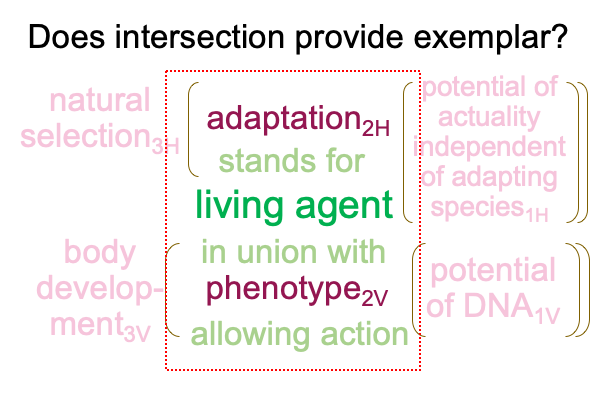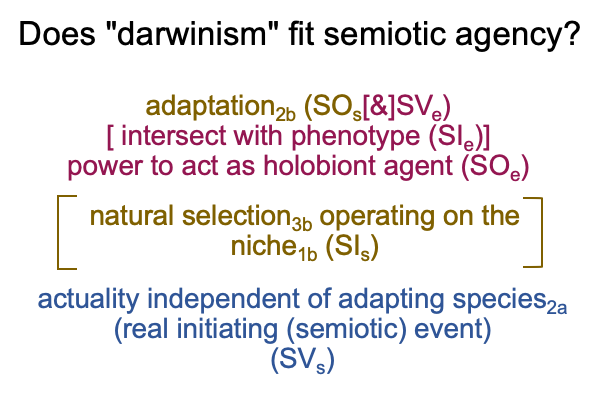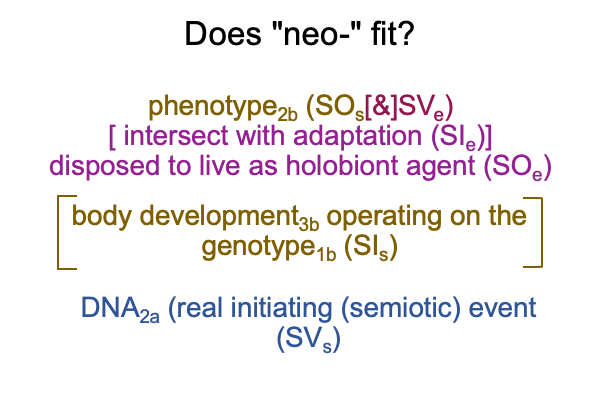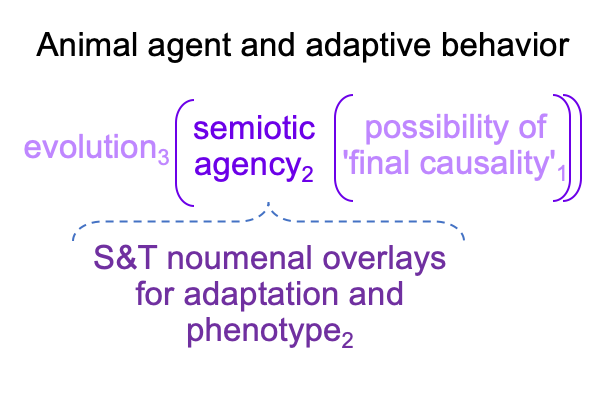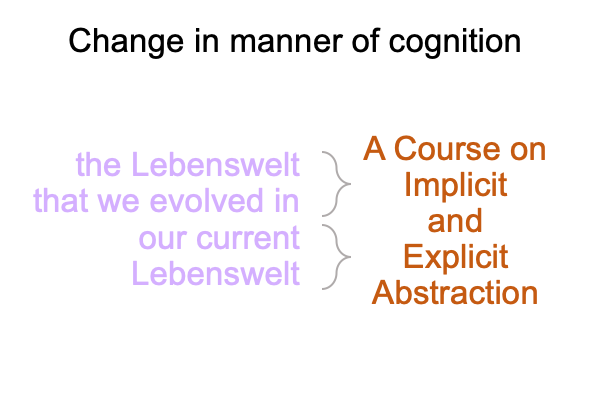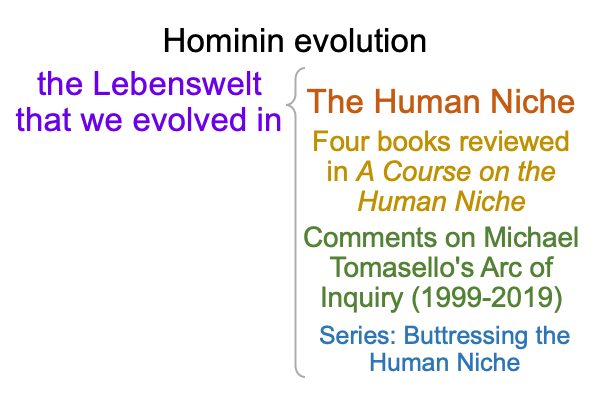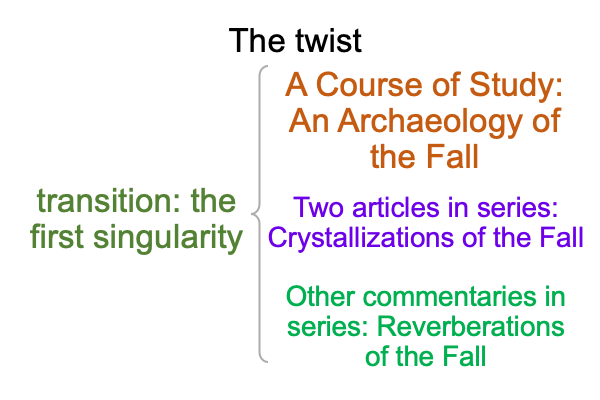Looking at Alexei Sharov and Morten Tonnessen’s Chapter (2021) “Human Agency” (Part 1 of 5)
1223 The text before me is chapter three of Semiotic Agency (2021, book details on point 830, pages 59-94).
1224 The abstract raises the question of evolution. The question is addressed earlier in this examination. Points 0710 through 0752 assert that the actualities of adaptation2b and phenotype2b are not the same. One does not situate the other. Instead, their nested forms intersect in such a manner as to constitute a single actuality2. Adaptation2b and phenotype2b intersect to constitute a living being2.
1225 How shall I proceed?
Semiotic Agency yields the Sharov and Tonnessen noumenal overlay by taking an interscope that is similar to the scholastic interscope for how humans think and transubstantiating it from thirdness to secondness.
In thirdness, the scholastic interscope contains the specifying and exemplar sign-relations.
1226 Here is a diagram.
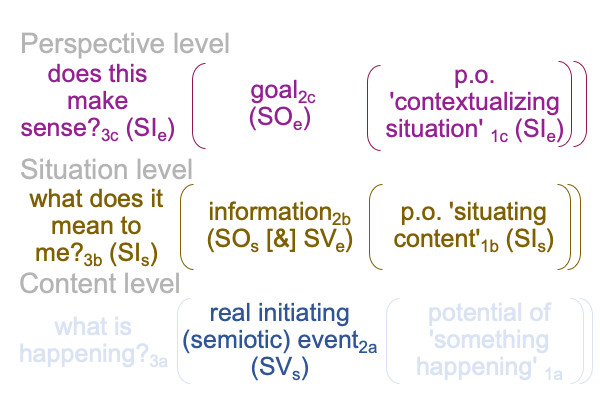
In secondness, the elements from these triadic sign-relations fit into a dyad, characteristic of Peirce’s secondness.
1227 The dyad consists of two contiguous real elements, very much in tune with Aristotle’s exemplar, matter [substance] form.
The following depicts a dyad within a dyad. Each dyad exhibits its own configuration.
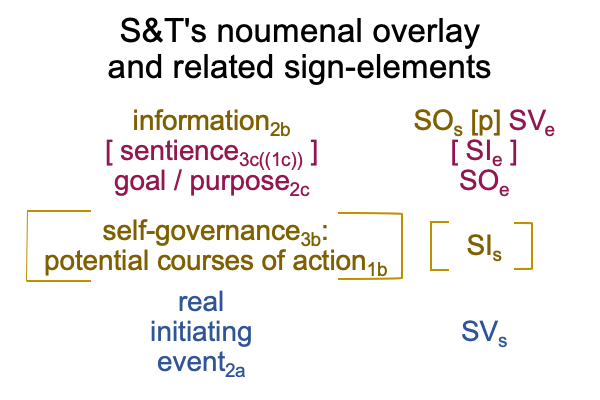
For the fundament, the specifying sign, SOs is like matter, SVs is like form, and SIs is [substance]. In a sense, a form of the sign-vehicle calls forth the matter of a sign-object, in the way that say, the form of a traffic stop sign2a (SVs) calls forth the matter of stopping the vehicle2b (SOs).
For the resonant, the exemplar sign, SVe is like matter, SOe is like form, and SIe is like [substance]. The matter of me following the rules of the road2b (SVe) stands for my successful arrival at my driving destination2c (SOe) in regards to making sense3c operating on the possibility that if everyone obeys the rules of the road then each one of us will get where we are going to1c (SIe).
1228 This dyad within a dyad performs what phenomenology claims to do, that is, identify what the noumenon must be.
The noumenon of what?
Biosemiotics.
Or, should I say, “Biosemiotics as an exercise of the Positivist’s judgment, however compromised the positivist intellect may be.”?
1229 Of course, this is a fantastic claim. But, this examination of Semiotic Agency (see point 830 for book details) and Pathways to the Origin and Evolution of Meanings in the Universe (see point 831 for book details) bears me out. Sharov, Tonnessen and Mikhailovsky set the stage for a paradigm that not only is phenomenological, but accounts for how phenomenology works. This examination adds value by presenting the diagrams.

